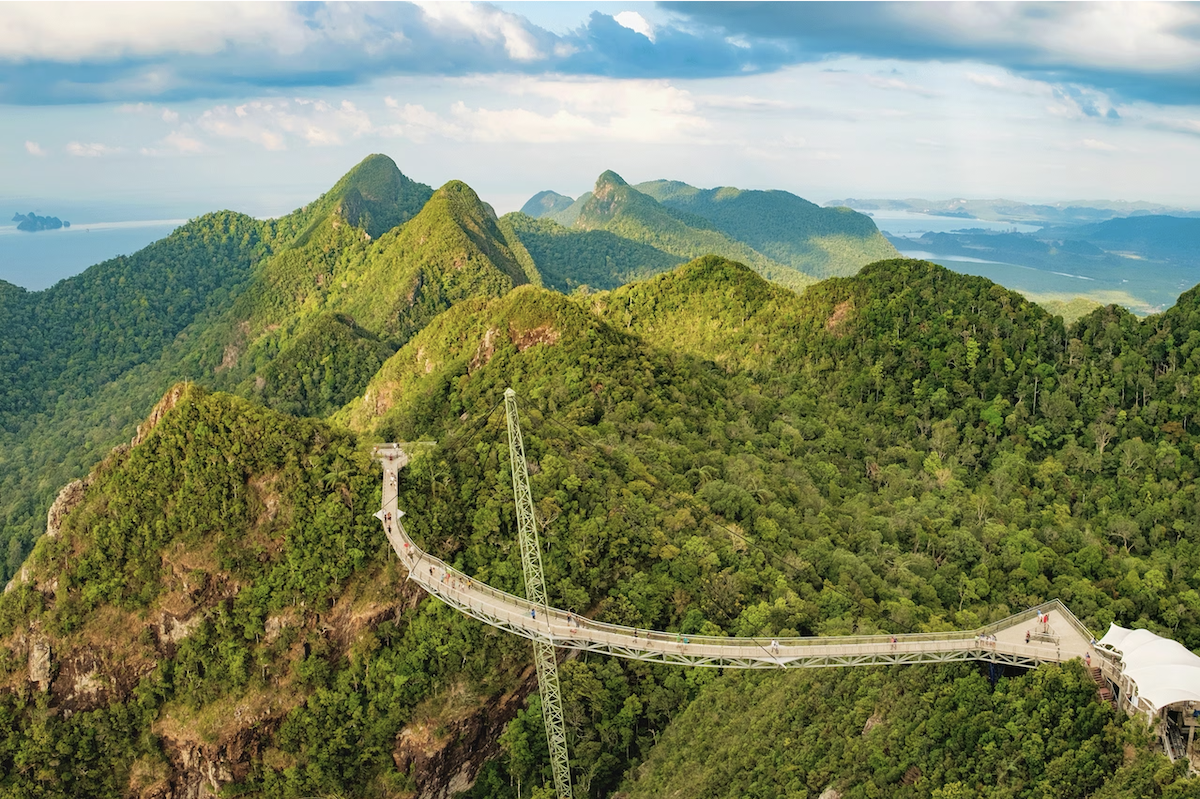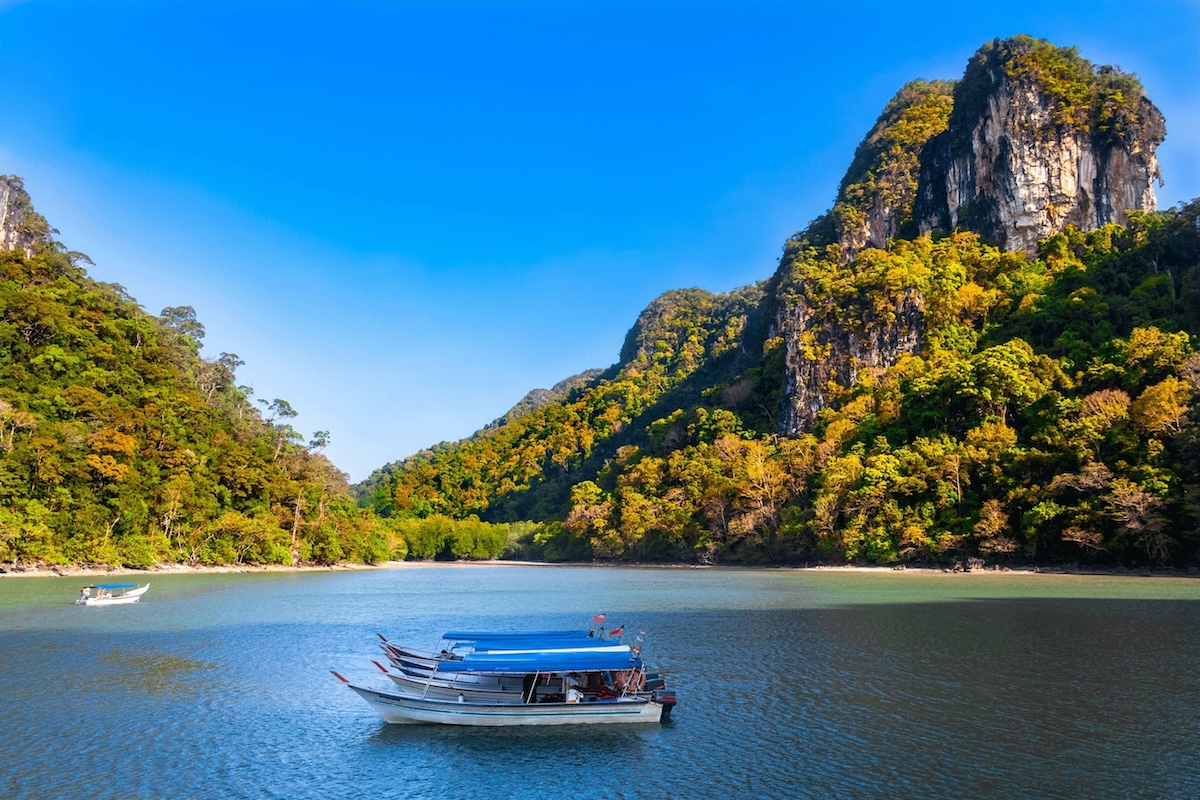Land of Legends: Discover myths and Malaysian wildlife in the archipelago of Langkawi
Published in National Geographics
https://www.nationalgeographic.com/travel/article/paid-content-langkawi-malaysia-reasons-to-visit
An hour’s flight from Kuala Lumpur, Langkawi’s cluster of paradise islands feels blissfully remote, with palm-swaying shores, towering mountain ranges and lush rainforests teeming with wildlife.
Nature has been abundantly kind to Langkawi. Adorning the cerulean Andaman Sea, 18 miles from mainland Malaysia, this 99-island archipelago is blanketed in rainforest, brimming with exotic wildlife and home to picturesque paddy fields and jungle-clad hills. Once a haven for pirates, the largest island of Pulau Langkawi (commonly referred to as Langkawi) is now a sought-after location for its wildlife adventures and relaxing beachside stays.
Why should you visit the archipelago?
Langkawi is home to a vast assortment of white-sand beaches — Pantai Cenang is an idyllic spot on the main island’s west cost, while Tanjung Rhu on the northern tip is a quaint, more secluded bay. Yet, it’s the sheer diversity of landscapes, from limestone cliffs to mangrove swamps and jungle-tangled mountains, that garnered the entire archipelago UNESCO Global Geopark status in 2007 — the first in the whole of Southeast Asia.
Astonishing wildlife and plant species inhabit all corners of the islands, including 226 species of birds and over 500 types of butterflies. Travellers should keep their eyes peeled for Langkawi’s fabulous ‘flying five’ — the red giant flying squirrel, the paradise tree snake, the twin-spotted flying frog, the flying lizard and the fascinating colugo, the world’s only flying primate.
Langkawi is also known as the ‘Land of Legends’ due to the myths attached to various sites and monuments. Mahsuri Museum, located at the southeastern tip of the main island, is worth a visit for its assortment of Malay arts and artefacts. It’s also home to the tomb of Mahsuri, a local woman said to have cursed the island for seven generations. As the legend goes, when the curse lifted, Langkawi’s tourism began to thrive.

A panoramic view of the Langkawi Sky Bridge and the Langkawi SkyCab cable cars on the Gunung Machinchang mountain range.
PHOTOGRAPH BY SONATALI, GETTY IMAGES
What are the best outdoor activities to try in Langkawi?
Langkawi has four designated ‘geosites’ — protected areas that have distinct natural wonders. The most striking is the Gunung Machinchang mountain range, Langkawi’s second-highest peak and geologically the oldest mountain in Southeast Asia. A steep cable-car, the Langkawi SkyCab, whisks visitors up to the summit in ultra-modern, glass-bottomed gondolas.
At the top, visitors can walk the 410ft-long SkyBridge, a majestic feat of engineering whose curved footbridge is suspended high above the jungle canopy. After taking in the vistas of the surrounding islands and ocean, stroll down the mountain following one of the Langkawi Sky Trail hiking paths.
On the east side of Langkawi, 38sq miles of colossal limestone cliffs, beaches and caves make up the Kilim Geoforest Park. Its meandering rivers and narrow channels are best explored by boat, where travellers can observe cheeky macaque monkeys, scuttling tree crabs and white-bellied sea eagles. Meanwhile, on the west side of Langkawi, the Bio-Geo Trail in Kubang Badak gives a fascinating insight into the island’s 500-million-year old geology, rich mangrove habitat and 18th century settlements.
Another popular excursion is the 15-minute boat ride from Kuah Jetty, Langkawi’s main ferry terminal, to Pulau Dayang Bunting, the archipelago’s second-largest island. Its name translates to ‘Isle of the Pregnant Maiden’, as its shape resembles an expectant mother, and, legend has it, its freshwater lake has magical properties to help women’s fertility and replenish body and mind. After a refreshing dip, be sure to explore the various other wonders of Dayang Bunting Marble Geoforest Park, including Gua Langsir and Gua Kelawar, two remarkable limestone caves, and the surrounding mangrove forest which is accessible via a boardwalk.
What is there to eat and drink?
The stalls across Langkawi’s various night markets are a great place to sample the local fare, which is seafood-rich and infused with herbs and spices. Try the gulai panas, a fragrant, spicy curry, or the kerabu bronok, a seafood salad with an unusual marine creature, similar to a sea cucumber, used as the main ingredient.
Who should visit?
Life is lived outdoors in Langkawi, making it ideal for nature and outdoor enthusiasts. The main island makes a great destination for families, too, with its laid-back beachside stays and its small size allowing for easy travel between attractions.
When’s the best time to go?
High season runs from November to April, when Langkawi enjoys clear skies and warm temperatures (between 30°C to 35°C). Showers and storms can be more frequent from May to August, while September to October is rainy season.
Plan your trip
Flights between London and Langkawi take around 16 hours and include one stop via Kuala Lumpur or Singapore. Once on the island, hire cars and taxis are the best way to get around — the main roads are well maintained for driving. Boat operators are readily available and offer tours to neighbouring islands. For more information, visit naturallylangkawi.my
Contact:
About Langkawi Development Authority (LADA)
Langkawi Development Authority (LADA) was established by the federal government to plan, promote and implement development on the island of Langkawi. LADA was officially established on March 15, 1990 under the Langkawi Development Authority Act 1990 (Act 423) and placed under the authority of the Ministry of Finance.
For further details, please visit www.lada.gov.my or visit www.naturallylangkawi.my
Langkawi Development Authority, LADA
Tel : 04-9600600
Faks : 04-9661019
Email : [email protected]


